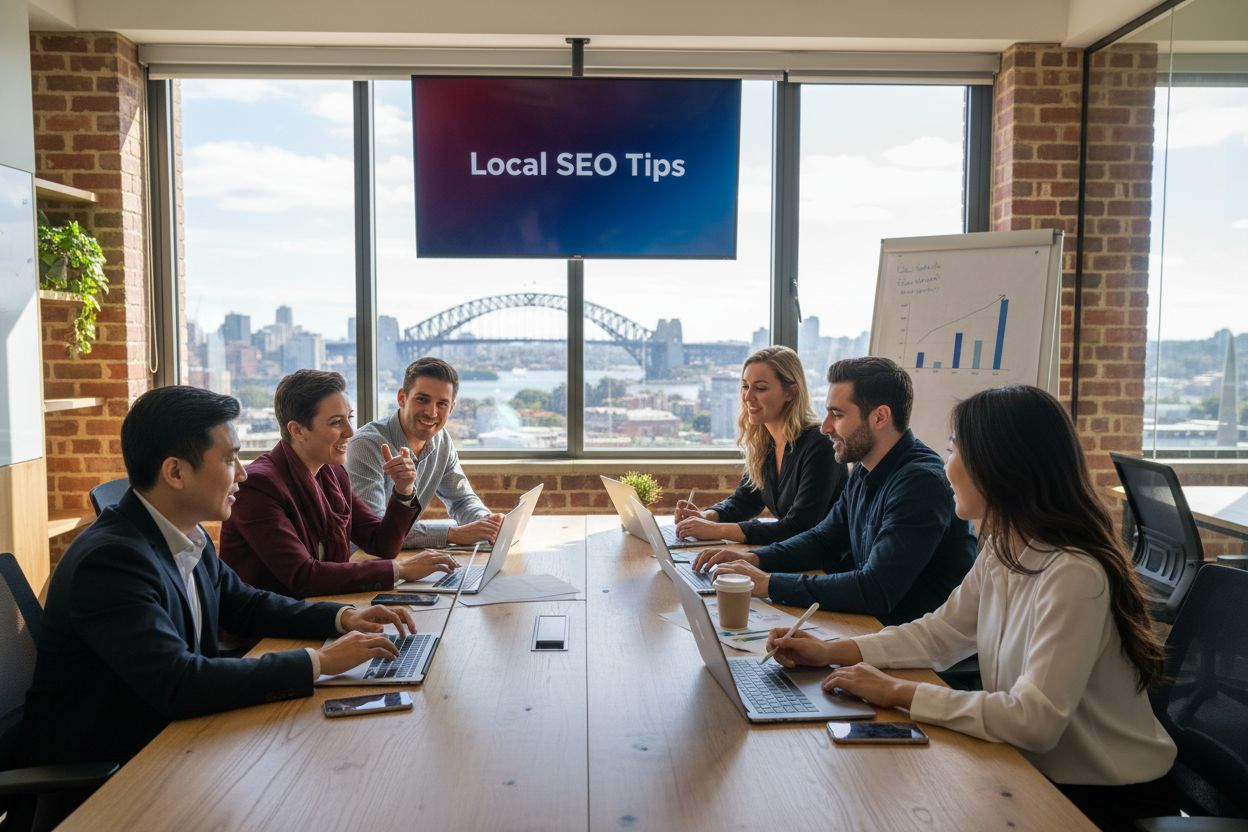SEO Benefits for Businesses: Complete Essential Guide
SEO benefits for website explained: discover core concepts, types of SEO, real-world impacts for Australian businesses, risks, costs, and best practices.
SEO Audit Check: Complete Guide for Sydney Businesses
SEO audit check guide for Sydney: learn definitions, main audit types, technical and on-page SEO, risks, tools, and compliance in Australia.
Understanding Local SEO for Businesses: Key Insights
Explore local SEO for businesses and discover its importance, workings, and key concepts for effective online visibility.
Understanding Local SEO Tips Sydney for Your Business
Discover essential local SEO tips Sydney to elevate your business' online presence and connect with customers effectively.
7 Essential Australian SEO Tips for Online Success
Discover 7 essential australian seo tips to boost your website's ranking and drive traffic effectively in the Australian market.
8 Essential Steps in Your SEO Audit Checklist
Discover 8 key tips to enhance your SEO audit checklist for better website performance and visibility.
Best AI SEO Service Providers in 2025
AI might seem like a buzzword in the business world these days. However, it is quickly becoming a vital element of everything from customer service to marketing strategy. With AI,
From Ghost Brand to Growth Machine: How We Turned Focus Gum Into a 363% Success Story
Focus Gum arrived at our door with the digital equivalent of tumbleweed blowing through their website. Domain authority of 1 (yes, one), virtually zero organic visibility, and the
Generative Engine Optimisation for Ethical Organisations: A Strategic Framework for AI Visibility in 2025
Drawing from 10 years of implementing SEO & GEO strategies across 30+ community organisations and ethical start-ups in Sydney. Executive Summary After implementing Generative E
How Authority Signalling Becomes Your Secret Weapon for Authentic Engagement
Picture this: you’re scrolling through LinkedIn with your morning coffee, and two posts catch your eye. One’s from a startup founder you’ve never heard of, sharin













